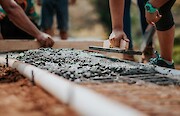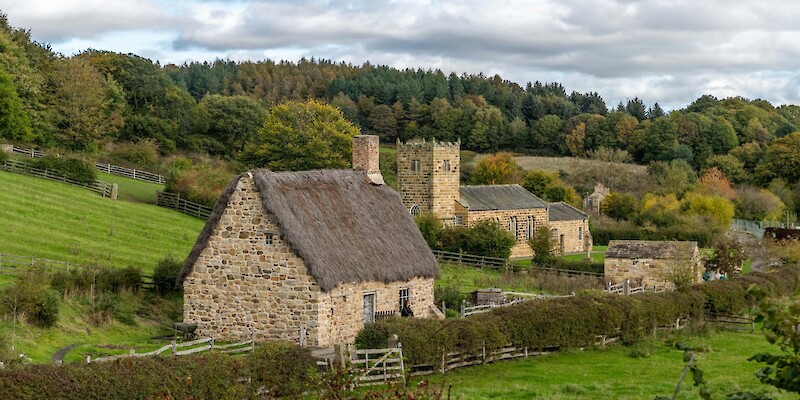If you plan to purchase a property constructed from materials other than standard brick and mortar, you may require a non-standard construction mortgage. While these mortgages function similarly to standard ones, not all lenders cater to non-standard properties. A non-standard construction mortgage is essentially a mortgage offered by a lender willing to accept properties of this type within their lending criteria.
What is a non-standard construction property?
A non-standard construction property can encompass various types, with the definition of "standard" differing between lenders. For instance, some lenders may be hesitant to offer mortgages on certain types of flats compared to houses.
More commonly, non-standard construction refers to properties built with materials other than bricks, such as timber, concrete, or steel. It can also include properties that are harder to maintain, like listed buildings or prefabricated houses.
Can you get a mortgage on a non-standard property?
Yes, it is possible to secure a mortgage for a non-standard construction property, though it may require more effort and research. Engaging a mortgage broker experienced in non-standard construction mortgages is highly recommended to identify lenders willing to accommodate your specific property type.
Key considerations:
- Lender criteria: Different lenders assess risk differently. For example, a lender willing to finance a Grade II listed property might not consider a Grade I listed building.
- Terms and rates: Even if a lender accepts your application, the terms may differ from standard mortgages. These could include shorter loan terms or higher interest rates to offset the perceived additional risk.
- Resale value: Lenders often evaluate the property's resale potential. Non-standard homes may deter future buyers due to factors such as elevated mortgage rates, higher maintenance expenses, and increased home insurance premiums.
- Survey costs: Non-standard construction properties usually require more detailed and costly surveys to assess their condition and value accurately.
Although purchasing a non-standard construction property comes with unique challenges, thorough preparation and expert guidance can help secure the right mortgage.
Types of non-standard construction
Here are some common property types often considered non-standard construction by mortgage lenders, along with key considerations for each:
Listed Buildings
Challenges: Listed properties often come with restrictive covenants requiring owners to preserve specific characteristics, making repairs and maintenance expensive and complex. Difficulty by grade: Grade I: Most challenging to finance. Grade II*: Slightly easier. Grade II: Typically the most accessible. LTV Limits: Most lenders cap at 90% LTV for listed buildings. Specialist Lenders: Usually required, especially for higher grades or additional complexities.
Thatched-Roof Properties
Survey Requirement: Lenders typically require a valuation survey. Properties in poor condition are harder to finance. Listed and Thatched: Likely to necessitate a specialist lender. LTV Options: High street lenders may offer around 85% LTV, while specialist lenders might go up to 90%.
Barn Conversions
Usage Matters: If located on farmland or agricultural land, commercial or semi-commercial mortgages may be required. For standalone residential homes, standard residential mortgages may apply, depending on the construction materials. LTV Factors: Material quality and intended use impact lending terms.
Steel-Framed Properties
Challenges: Quality varies significantly, with BISF (British Iron and Steel Federation) properties particularly difficult to finance due to structural concerns. LTV Limits: Typically capped at 50% LTV. Specialist Support: A specialist lender and surveyor are often necessary.
Prefabricated Houses (Modular Homes)
Older Prefabs: Pre-war homes made from unsustainable materials are difficult to finance, often with LTV capped at 50%. Modern Modular Homes: Newer eco-friendly constructions can secure up to 85% LTV due to improved materials and sustainability.
Timber-Framed Houses
Older Properties: May be considered more durable than newer ones due to superior materials and craftsmanship. Survey Requirement: A full structural survey is typically needed. LTV Options: Lenders often offer 75–80% LTV, depending on the property’s valuation.
General Tips
For all these property types, working with a specialist lender and obtaining a thorough survey can help navigate the complexities of securing a mortgage. A knowledgeable mortgage broker can provide invaluable assistance in finding lenders suited to these unique properties.
How to get a mortgage on a non-standard construction property
If you're planning to apply for a non-standard construction mortgage, it’s highly advisable to consult a broker with expertise in this niche. A knowledgeable broker can:
- Identify suitable lenders: Direct you to those offering mortgages for non-standard properties.
- Provide survey guidance: Advise on the types of property surveys lenders may require.
- Assess LTV impact: Explain how the construction type might affect the maximum loan-to-value (LTV) ratio and, consequently, your deposit requirements.
Since a lower LTV means a larger deposit is needed, finding a lender offering the highest possible LTV on a non-standard property is often crucial. The right broker can help bridge this gap, increasing your chances of securing a mortgage that meets your needs.
Maintenance on non-standard properties
Maintenance is a significant consideration for non-standard construction properties, as it directly impacts their value and mortgageability. Lenders often evaluate the upkeep requirements and the potential challenges these properties may present over time. Consulting a specialist broker can help you understand the implications of maintenance requirements and explore potential lenders or solutions, including property modifications to improve its mortgageability.
Which lenders offer non-standard construction mortgages?
Most lenders are willing to finance certain types of non-standard construction homes, but their criteria vary significant. The more unique or unconventional the property, the greater the likelihood that a specialist lender or non-standard construction mortgage will be required. This tailored approach increases the chances of finding the right mortgage for your non-standard property.
Will your maximum borrowing be impacted?
When financing a non-standard construction property, most lenders impose stricter loan-to-value (LTV) limits.
However, working with a specialist lender often provides greater flexibility compared to traditional high street banks. The maximum LTV available varies depending on the specific type of non-standard property you’re purchasing.
Your annual income also influences the maximum mortgage size you can qualify for, with most lenders offering loans of 4 to 4.5 times your income. Specialist lenders might offer enhanced flexibility based on your overall financial profile.
Since LTV and affordability criteria can vary widely, consulting a broker experienced in non-standard construction mortgages can help identify the most suitable lender and maximise your borrowing potential. Reach out to one of our friendly advisers for tailored guidance.
Frequently Asked Questions
Mortgage rates for non-standard construction properties are often higher than those for traditional brick-and-mortar homes due to the increased perceived risk to lenders. Since rates depend heavily on individual circumstances and lender terms, it’s advisable to consult a specialist mortgage broker. They can provide personalised guidance on potential costs and help you secure the most competitive rate available for your non-standard property.
















